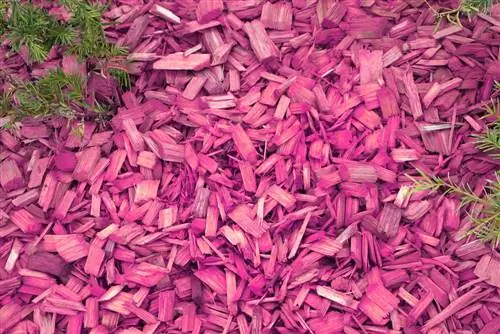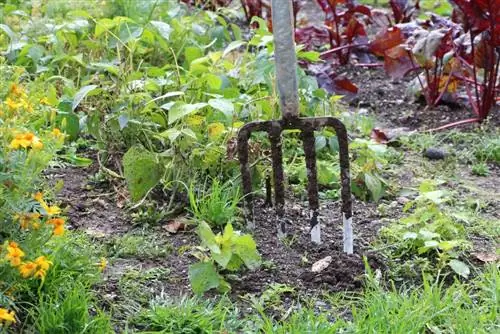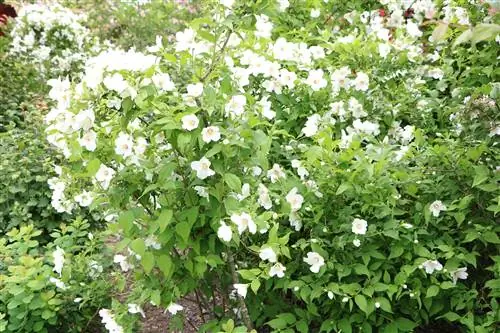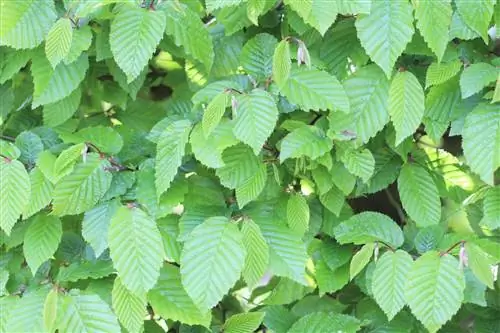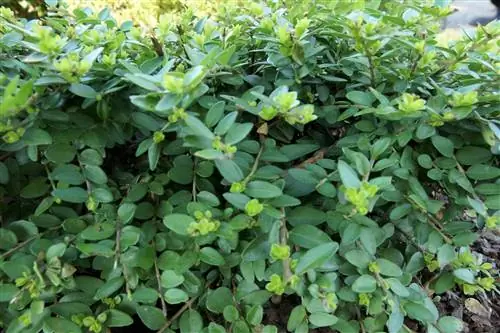- Author admin [email protected].
- Public 2024-01-15 11:54.
- Last modified 2025-01-24 12:45.
A hedge as a privacy screen or border does not always have to be monotonous, evergreen and consist of one type of plant. There are many other options here, especially to create a colorful, mixed hedge. The hedge should also fit in with the overall look of the rest of the garden, and if it is a natural or cottage garden, then the hedge should also be laid out similarly, as the following article explains.
Different types of mixed hedges
If you want to make your garden colorful and for whom a simple green hedge made of just one type of plant is too boring, you usually want to create a colorful hedge as a privacy screen or demarcation. There are many different variants, each with a different meaning and purpose. The hedges can be combined with different plants with very different flowers as well as with plants of the same variety and different colored leaves or flowers. The following mixed hedges can be cultivated to match the overall look of the garden:
- flowering high hedge
- flowering low hedge
- Hedge for birds
- fragrant hedge
- Hedge for insects and butterflies
- Beech hedge two-tone
- Hedge made of various butterfly bushes
- Hedge made of mixed cinquefoils
Tip:
If you want to create a mixed hedge, you shouldn't choose too many different types of hedge. For a length of around four to five meters, up to four different plant species are sufficient, which should be chosen here.
Flowering high hedge first example
If the hedge is to serve as a property boundary and privacy screen, then it must be planned sufficiently high. However, the following bushes and shrubs are not wintergreen and shed their leaves in autumn, providing visibility in winter. However, these are shrubs that sprout early in spring and the hedge becomes opaque again.
Bridespiere (Spiraea arguta)
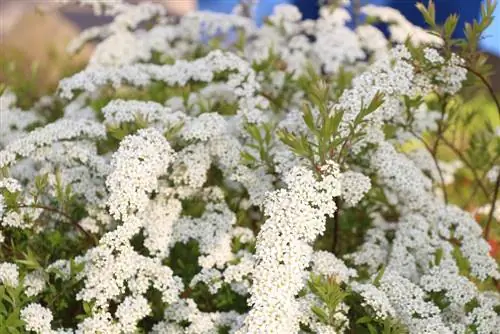
- Flowering period between April and May
- small, single, densely growing, white flowers
- Flower umbels look like bridal veils
- spherical growth
- up to two meters high
- suitable for any floor
- sunny location
- hardy
- annual pruning required
Forsythia (Forsythia intermedia)
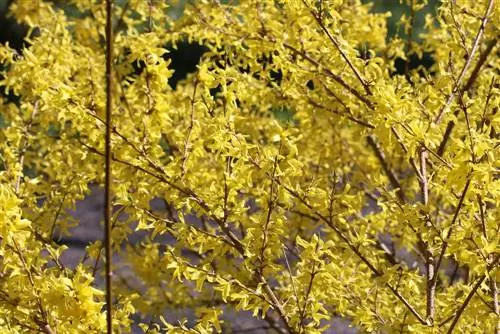
- Flowering time in March/April
- before the leaves emerge
- yellow, bell-shaped, small flowers
- Almost any nutrient-rich soil is suitable
- bright, sunny location
- hardy
- must be cut
- otherwise the flowering will decrease
Butterfly Bush (Buddleja davidii)

Weigela Rosea (Weigela rosea)

- light pink flowers
- Flowering period between May and June
- dark green leaves
- Growth height up to three meters
- Part shade or full sun
- water-permeable substrate
- hardy
Flowering high hedge second example
Since there shouldn't be too many bushes and shrubs mixed together in one hedge, otherwise it could appear too hectic and untidy, the plants were divided into two examples. It looks decorative if five specimens of each bush are mixed together over a length of four to five meters. The first four different bushes are planted and this mixture is then repeated five times. This is how the hedge becomes harmonious.
Stuffed garden jasmine (Philadelphus virginal)
- fragrant, creamy white flowers
- Flowering period between May and June
- fast growing shrub
- needs pruning every year
- sunny location
- nutrient-rich and permeable substrate
- hardy
Common Lilac (Syringa vulgaris)
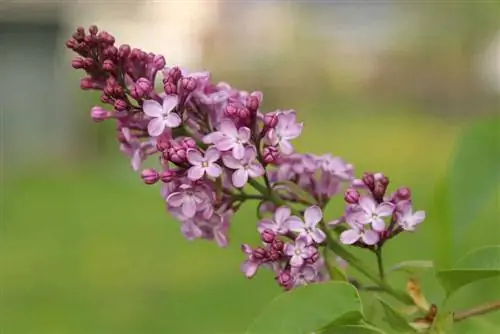
- in this latitude since the 16th century
- purple flowers
- small flowers close to compact umbels
- Flowering period May to June
- keep it small by cutting it
- Otherwise it will be too high in the hedge
- sunny location
- nutrient-rich, permeable soil
- hardy
Cornelian cherry (Cornus mas)
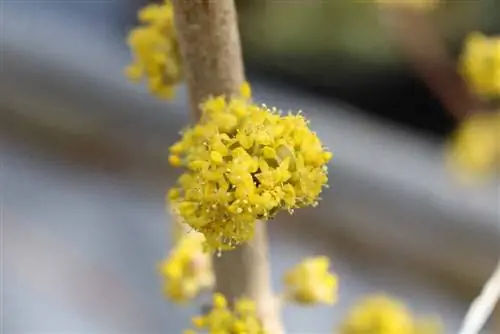
- inconspicuous flowers in spring
- forms bright red fruits
- appear late summer to autumn
- only edible for birds
- sunny location
- suitable for almost all garden soils
- Pruning required regularly
- hardy
Butterfly Bush (Buddleja davidii)

Tip:
Of course you can mix the examples from the tall, flowering hedges as you like. All shrubs go well together as they can reach the same height, are deciduous and require the same soil conditions and location.
Flowering low hedge
The following shrubs are particularly suitable for a low, flowering hedge in a front garden or as a garden bed border. They don't take up much space in height, but are also not suitable as privacy screens.
Amethyst Berry Magic Berry (Symphoricarpos doorenbosii 'Magic Berry')
- pink, small berries
- after flowering from the end of July
- Flowering period from May to July
- Flowers white to pink
- Growth height up to one meter
- Location full sun
- Soil permeable, fresh and nutrient-rich
- hardy
Fingerbush (Potentilla fruticosa) “Goldfinger”
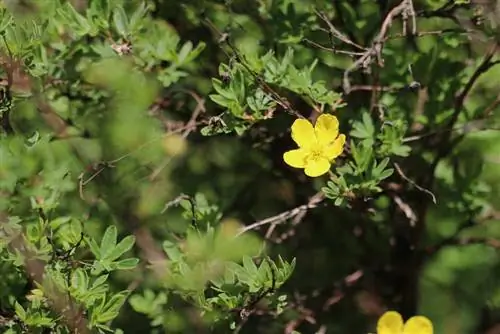
Summer Spiere (Spiraea japonica and Spiraea bumalda)

- Growth height up to 70 centimeters
- dark pink small flowers
- on flower umbels
- Flowering period between July and September
- Leaves gold to bronze
- undemanding to substrate
- bright to full sun location
- hardy
Petite Deutzia (Deutzia gracilis)
- Growth height up to one meter
- snow-white blossom
- Flowering period from May to June
- regular trimming required
- Part shade to full sun
- Soil texture moist and nutrient-rich
- hardy
Mixed hedge for birds
In a natural garden where birds cannot be missing, shrubs and bushes that produce colorful berries in autumn and that provide food for local songbirds are particularly suitable. So the following mix of shrubs was put together that will attract many birds to the garden. The animals will also like to build their nests in such a hedge.
Amethyst Berry (Symphoricarpos doorenbosii 'Magic Berry')
Single-handled hawthorn (Crataegus monogyna)
- native hedge plant
- grows very densely
- thorny branches
- Birds like to nest here
- Bloom in May
- pink to white flowers
- Cutback in protective clothing
- bright to sunny location
- well tolerated by wind and hardy
- normal garden soil
Cornelian cherry (Cornus mas)
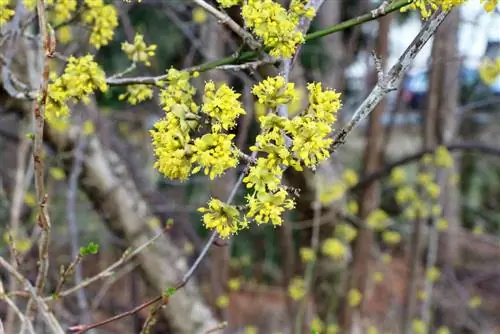
Copper rock pear (Amelanchier lamarckii)
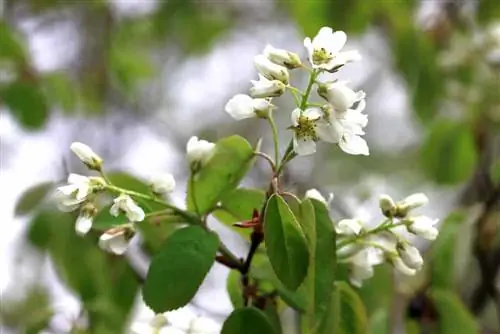
- white flower clusters in spring
- yellow autumn color of the leaves
- can get very high
- must therefore be cut to height
- likes to go wild
- hardy
- tolerates shady location
- ideal sunny location
- Soil moist and permeable
Note:
It doesn't matter whether it is a hedge specifically for birds, if you want to trim your hedge, then you should adhere to the nature conservation law. The hedge may not be cut between March 10th and September 30th to avoid disturbing the breeding birds.
Fragrant hedge
The hedge made up of the following shrubs was put together from particularly fragrant specimens and is therefore suitable as a hedge near the terrace or another seat in the garden. The bushes can also grow tall enough to deter prying eyes.
- Stuffed garden jasmine (Philadelphus virginal)
- Common Lilac (Syringa vulgaris)
- Butterfly Bush (Buddleja davidii)
- Petite Deutzia (Deutzia gracilis)
Tip:
So that the hedge develops its beautiful, fragrant flowers every year, it needs annual, regular pruning.
Hedge for insects and butterflies
The following shrubs for the natural insect garden are fragrant and therefore attract many butterflies and useful insects. This suggestion for a colorful mixed hedge is also suitable for cottage gardens.
Bloodcurrant (Ribes sanguineum)
- beautiful red to pink flowers
- Flowering period from March to May
- hydrangea type
- prefers partial shade
- Soil moist and permeable
- needs regular trim
- hardy
- Bridespiere (Spiraea arguta)
- Common Lilac (Syringa vulgaris)
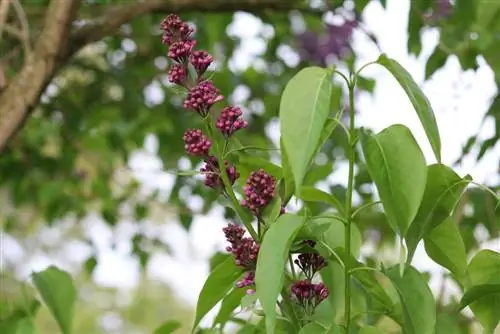
Butterfly Bush (Buddleja davidii)
Note:
As you will notice, some of the shrubs here are listed multiple times under different hedge types. This is because all of the shrubs and bushes explained here are suitable for many types of colorful mixed hedges.
Beech hedge with two leaf colors
If you want a simple hedge without flowers or berries, but still colorful, simply mix copper and copper beech and get a colorful picture in your garden with the different colored leaves. The hedge can also be so high that it is also suitable as a privacy screen.
Columbian Beech (Fagus sylvatica f. purpurea)
- dark purple leaves
- Leaves fall off in spring
- then immediately new shoots
- Location sunny to partially shaded
- Soil moist and permeable
- hardy
- regular pruning required
Common beech (Fagus sylvatica)
- early leaves light green
- become dark green in summer
- turn brown in autumn
- dried leaves remain stuck
- Sun to partial shade
- keep slightly moist
- Soil nutrient-rich
- fast growing
- regular pruning required
- hardy
Butterfly bush hedge

There are many different varieties of the graceful butterfly bushes (Buddleja davidii) in a wide variety of flower colors. These shrubs are also suitable in your own hedge because the variety is great here. Below, red-purple, blue-purple, pink and white flowers have been mixed in a hedge.
“Empire Blue”
- Flowering period between July and October
- Flower strongly scented
- purple and blue flowers form clusters
- Location sunny to partially shaded
- Soil moist and permeable
- moderately hardy
- cut back regularly
“Pink Delight”
- Flowering period July to October
- Flower color pink
- sitting on long grapes
- sunny to partially shaded location
- Soil moisture normal
- moderately hardy
- Pruning once a year
“Royal Red”
- Flowering period between July and October
- Flower color purple
- Flowers are on long clusters
- Sun to partial shade
- Soil always slightly moist
- moderately hardy
- regular pruning
“White Profusion”
- white flowers on long clusters
- Flowering period from July to October
- sunny to partially shaded location
- Always keep the soil slightly moist
- conditionally hardy
- Pruning once a year
Tip:
Since all butterfly bushes are only partially hardy, they are only suitable for a hedge in a milder climate. Otherwise, the entire hedge would have to be protected with plant fleece and brushwood mats in very frosty temperatures.
cinquefoil hedge
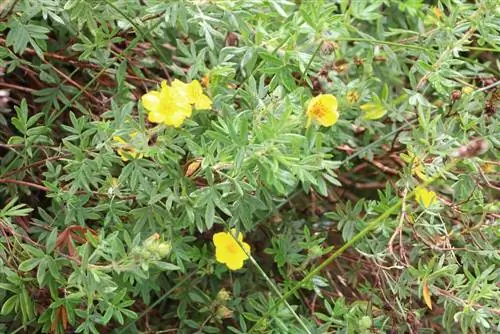
Crab bushes (Potentilla fruticosa) are also available in different colors. The following hedge was put together from three colors and fits perfectly as a low hedge in the front garden, as a bed border or terrace border.
“Abbotswood”
- Growth height up to one meter
- Flowering from June to October
- decorative small white flowers
- leaves blue-green
- hardy
- Location sunny and bright
- Soil texture permeable and moderately moist
- nutrient-rich substrate
- prune annually
“Goldfinger”
- Growth height up to 110 centimeters
- Flowering between June and October
- long, yellow flowers
- Leaves fresh green
- hardy
- sunny location
- permeable, fresh, nutrient-rich soil
- cut back regularly
“Red Ace”
- Growth height up to 60 centimeters
- Flowering between May and October
- lots of red to orange, long flowers
- Leaves light to medium green
- fresh, permeable, nutrient-rich substrate
- bright to sunny location
- hardy
- pruning is not necessary
Tip:
All finger bushes can cope well with drought, which can last for several days.


